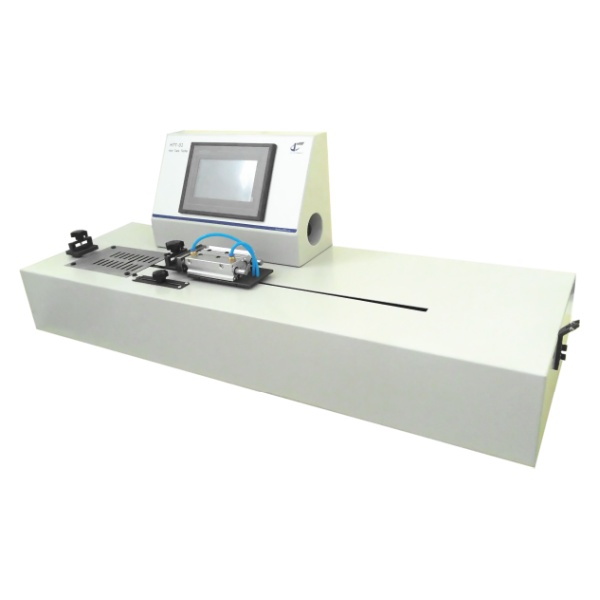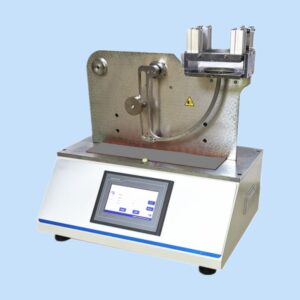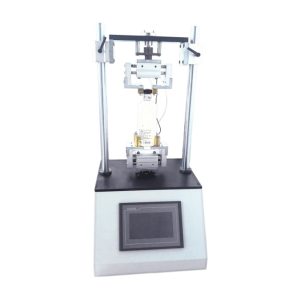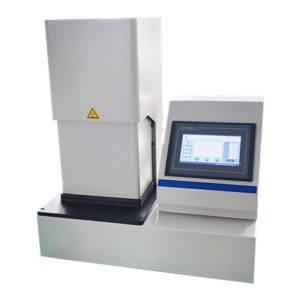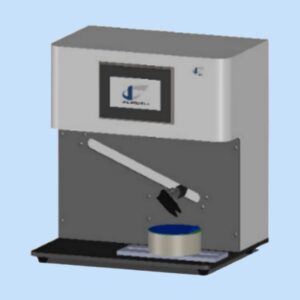HTT-01 Hot Tack Tester
- Standard: ASTM F1921, ASTM F2029
- Manufacturer: Cell Instruments
- Applications: Packaging materials, medical device materials, pharmaceutical testing, adhesives, textiles, paper and cardboard containers, and more.
- Customization: Available for special testing requirements and automation transformations
I. Introduction of HTT-01 Hot Tack Tester
In the world of material testing, the Hot Tack Tester stands out as an essential instrument, particularly for industries where the integrity of heat seals is critical. Our Hot Tack Tester is designed to evaluate the strength of heat seals, ensuring the reliability and safety of products in various sectors including packaging, medical, pharmaceutical, textiles, and more. With the increasing demand for secure and durable packaging, especially in sensitive fields like pharmaceuticals and food, the role of hot tack testing has never been more significant.
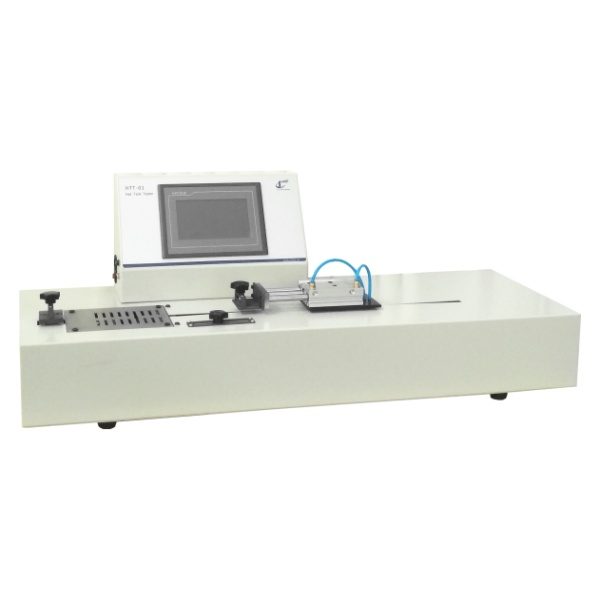
II. What is Hot Tack Testing?
Hot tack testing is a method used to measure the strength of a heat seal while it is still hot, immediately after sealing. This test is crucial because it simulates the conditions under which seals are formed and handled in real-world applications. The primary role of hot tack testing is to evaluate the immediate holding strength of a seal, which is essential in determining if the packaging can withstand the stresses of handling and processing before the seal cools and fully sets. Ensuring the quality and reliability of sealed products is vital, particularly in industries like packaging and medical devices, where seal failure can lead to contamination, product loss, and safety hazards.
III. Overview of ASTM F1921
The ASTM F1921 standard provides a detailed procedure for determining the hot tack and heat seal strength of thermoplastic materials used in packaging. The purpose of this standard is to offer a consistent and reliable method for evaluating the initial strength of heat seals, which helps in predicting the performance of packaging under various conditions.
ASTM F1921 outlines two primary test methods:
- Test Method A: Measures the hot tack strength of heat seals formed at a specified sealing temperature and pressure.
- Test Method B: Evaluates the strength of heat seals formed at varying temperatures to determine the optimum sealing conditions.
Both methods involve the preparation of test specimens, the use of precise instrumentation, and specific procedures to ensure accurate and reproducible results.
IV. Features of Our Hot Tack Tester
Our Hot Tack Tester is engineered to meet and exceed the requirements of ASTM F1921, offering several key features that ensure high performance and reliability:
- Control and Interface: PLC controlled with industrial-level stability and operated via an HMI touch screen.
- Versatile Functionality: Performs hot tack, tensile, and peeling tests.
- Integrated Testing: Combines hot tack, peeling, and tensile test capabilities into a single instrument.
- Temperature Control: Utilizes Delta P.I.D. temperature controller and PT100 temperature sensor.
- Sealing Jaws: Features aluminum encapsulated sealing jaws for consistent heating.
- Adjustable Testing Speed: Allows adjustable testing speeds ranging from 1 to 2000 mm/min.
- Safety Features: Includes auto zeroing, overload protection, and over-travel protection.
- Data Management: RS 232 port and professional software for advanced data handling. (Optional)
V. Test Methods in ASTM F1921
Conducting tests according to ASTM F1921 involves several key steps to ensure accuracy and reliability:
- Preparation of Test Specimens: Specimens are cut from the material to be tested, typically in strips of a specified width and length.
- Setting Up the Hot Tack Tester: The tester is calibrated and parameters such as sealing temperature, pressure, and dwell time are set according to the requirements of the test.
- Conducting the Test: The specimen is placed in the tester, where it is sealed and the hot tack strength is measured immediately after the seal is formed.
- Recording Results: The data is recorded, including parameters like seal initiation temperature, peak hot tack strength, and overall seal strength.
Results from these tests are crucial in understanding the performance characteristics of the material, allowing for optimization of sealing conditions to achieve the best possible seal integrity.
VI. Applications of Hot Tack Testing
Hot tack testing is vital across several industries to ensure the reliability and safety of products:
- Packaging: Ensuring the integrity of seals in food and beverage packaging to prevent contamination and spoilage.
- Medical: Verifying the strength of seals in medical device packaging to maintain sterility and prevent contamination.
- Pharmaceuticals: Maintaining the quality of pharmaceutical packaging by ensuring strong and reliable seals.
- Textiles and Adhesives: Testing the bonding strength and durability of materials used in textiles and adhesive products to ensure performance under various conditions.
VII. Customization Services
We understand that different applications require unique testing solutions. Our ability to customize the Hot Tack Tester to meet specific testing requirements sets us apart. Whether it’s adjusting parameters for specialized materials or integrating advanced automation systems, we can tailor our testers to fit your needs perfectly.
VIII. Benefits of Using Our Hot Tack Tester
Using our Hot Tack Tester offers numerous benefits:
- Improved Quality Control and Assurance: Ensures that seals meet stringent quality standards.
- Enhanced Product Reliability and Safety: Prevents failures that could lead to contamination or product loss.
- Compliance with Industry Standards: Meets ASTM F1921 and other relevant standards, ensuring regulatory compliance.
- Cost-Effectiveness: Efficient testing procedures reduce downtime and improve overall productivity, saving time and resources.
IX. FAQ
A1: Our Hot Tack Tester is compatible with a wide range of thermoplastic materials commonly used in packaging, including polyethylene, polypropylene, and multi-layer films.
A2: Hot tack testing measures the strength of a heat seal immediately after sealing, while it is still hot. This is different from other tests that measure the seal strength after the seal has cooled and set.
A3: Yes, we offer customization services to adjust the tester’s parameters and functionalities to meet specific testing requirements for different materials and applications.
A4: Industries such as packaging, medical, pharmaceuticals, textiles, and adhesives benefit significantly from hot tack testing due to the critical importance of seal integrity in these fields.
A5: Key features include high precision and accuracy, a user-friendly interface, customizable testing parameters, compatibility with various materials, and advanced functionalities such as automation and data analysis capabilities.
Reference
ASTM F1921 Standard Test Methods for Hot Seal Strength (Hot Tack) of Thermoplastic Polymers and Blends Comprising the Sealing Surfaces of Flexible Webs
ASTM F2029 Standard Practices for Making Laboratory Heat Seals for Determination of Heat Sealability of Flexible Barrier Materials as Measured by Seal Strength



